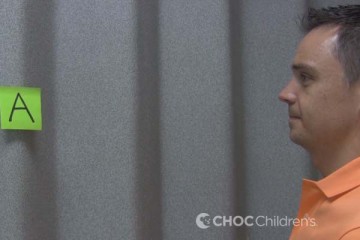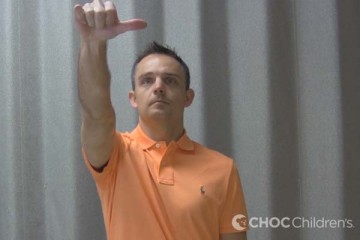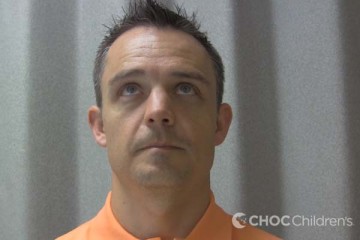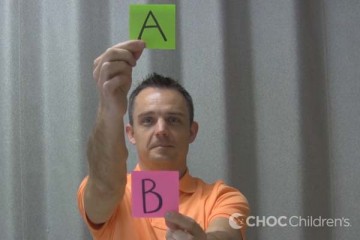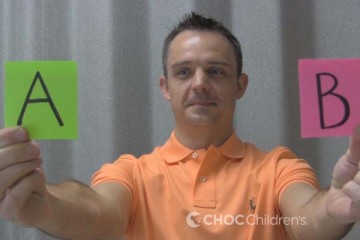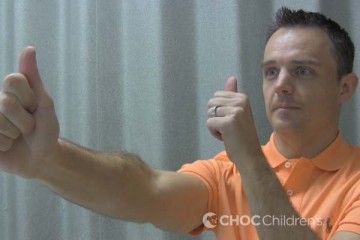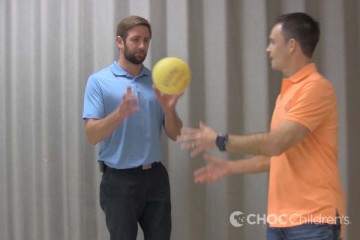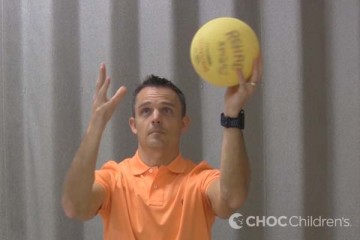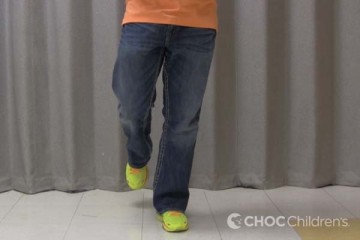A concussion can affect the ways that the head, brain, eyes, inner ears, hands, feet and the rest of the body work together.
When any of these systems aren’t working together correctly, here are a few of the symptoms that might occur:
- Headaches
- Dizziness
- Poor balance
- Convergence insufficiency (when eyes won’t work together to focus on a nearby object)
- Poor reflexes and slow reaction time
- Trouble standing from a seated position
- Trouble walking without looking at your feet
- Trouble focusing on tasks or recovering from distractions
- Forgetting tasks that used to be automatic
- Difficulty multitasking and dividing attention.
Customized Rehabilitation Programs for Children and Teens
Every concussion is different and therefore every rehabilitation plan is different. A rehabilitation program begins with an evaluation of a child or teen’s weaknesses and what causes their symptoms to flare up. From there, our team will recommend a treatment plan that may include physical therapy, speech and language (cognitive) therapy, and occupational therapy. Therapy visits may be held weekly or more, for 45 minutes to an hour each session. Physical therapy, speech and language therapy, and occupational therapy sessions may be scheduled back-to-back or separately depending on a child’s tolerance.
- Physical Therapy
Studies have shown that non-contact physical activity is helpful even if your child is still experiencing concussion symptoms. For that reason, physical therapy often makes up the bulk of a concussion rehabilitation plan. Physical therapy addresses issues with balance, coordination, the vestibular (inner ear) system, reaction time, peripheral awareness, multitasking and physical symptoms like headaches and dizziness. Our physical therapists guide a child or teen’s return to activity by using sport-specific strategies to overcome the problems they’re having. - Speech and Language (Cognitive) Therapy
Speech and language therapy focuses on treating any cognitive issues a child or teen may have. Speech and language therapy addresses issues with perception, fine motor skills, handwriting, learning, memory retention, comprehension and recall. Our speech and language therapists guide a child or teen’s return to academics by helping them adapt to the school setting. - Occupational Therapy
Occupational therapy addresses any visual motor skills that are problematic for a child or teen. Our occupational therapists can also assist your child in regaining fine motor control in the rare instance that this is one of your child’s symptoms.

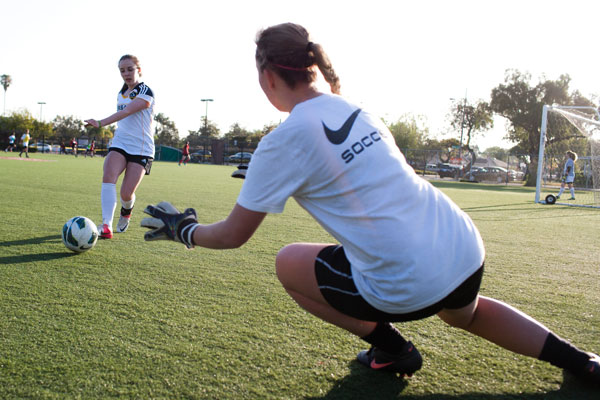
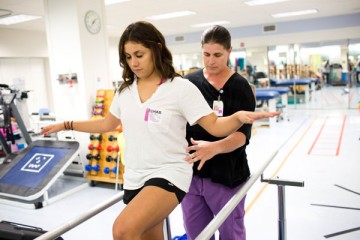 We are proud to offer the BioSway Balance System to measure a child or teen’s balance in different situations. Patients who are experiencing balance problems after a concussion stand on a platform that measures their sway while standing with their eyes open, compared to their sway when their eyes are closed. It also measures a patient’s balance while standing on a firm surface compared to a soft surface. The measurements are compared to expected norms and then tracked over time to determine a patient’s progress. The BioSway Balance System also provides prompts that help train patients in improving their balance.
We are proud to offer the BioSway Balance System to measure a child or teen’s balance in different situations. Patients who are experiencing balance problems after a concussion stand on a platform that measures their sway while standing with their eyes open, compared to their sway when their eyes are closed. It also measures a patient’s balance while standing on a firm surface compared to a soft surface. The measurements are compared to expected norms and then tracked over time to determine a patient’s progress. The BioSway Balance System also provides prompts that help train patients in improving their balance.